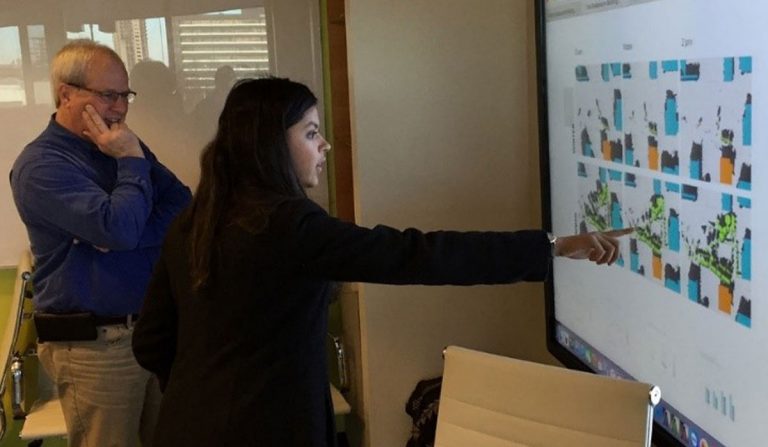Atlanta and the Southeast may be “the last ones to adopt the latest performance-related codes or certifications,” Pattern r+d CEO Sandeep Ahuja notes in an article in ILFI’s Trim Tab. But Ahuja’s experience on one of the finalist teams in the “ideas competition” for Georgia Tech’s Living Building gave her new hope that the region finally is moving forward.
Ahuja is something of wunderkind in the Southeast’s sustainable building community. She holds an architecture degree from Tech. She founded Pattern r+d, which is very hot Atlanta sustainability and design consultancy. And she’s won awards for her development of tools and workflows related to energy, water and materials. She’s also a Living Building Ambassador.
In March, another team — led by Atlanta’s Lord Aeck Sargent and Seattle’s The Miller Hull Partnership — won the ideas competition, and is designing the Georgia Tech building. (Sign-up here if you want get notice of our own upcoming in-depth look at the competition.) But Ahuja found her own team’s work methods encouraging. That group was led by Collins Cooper Carusi, Eskew+Dumez+Ripple and Hellmuth+Bicknese. Pattern r+d developed tools to analyze various components of the building, including energy, daylighting, the facade and thermal comfort.
As excited as I was to be involved in the competition, I was not quite certain how a team with 3 architecture offices, 2 mechanical engineering offices, and 2 landscape design offices was going to come together. Within two weeks of working on the competition as a full team, I observed an integration that I had not seen before. We were using everything to stay connected and be accessible to support each aspect of the competition through phone calls, meetings, slack, posts, and e-mails.
The process we followed in this competition was truly unique and performance driven with every aspect. For instance, Pattern r+d ran a full scale massing, orientation, glazing percentage and shading optimization to come up with a massing. This meant that we tested over 1000 options with 10 different massing types, 8 different orientations, 5 different glazing percentages and 3 different shading types. As we tested these options, it was critical that we look to optimize beyond energy. Thus the optimization was done for energy, daylight, glare and thermal comfort.
If you’re interested in how Ahuja measured multiple building performance variables for the Living Building project, click over to the Trim Tab article. A live version of the interactive tool developed by Patter r+d for the project can be viewed here. And if you want to learn more about the ideas competition or to keep up with the Living Building at Georgia Tech, sign-up here.


